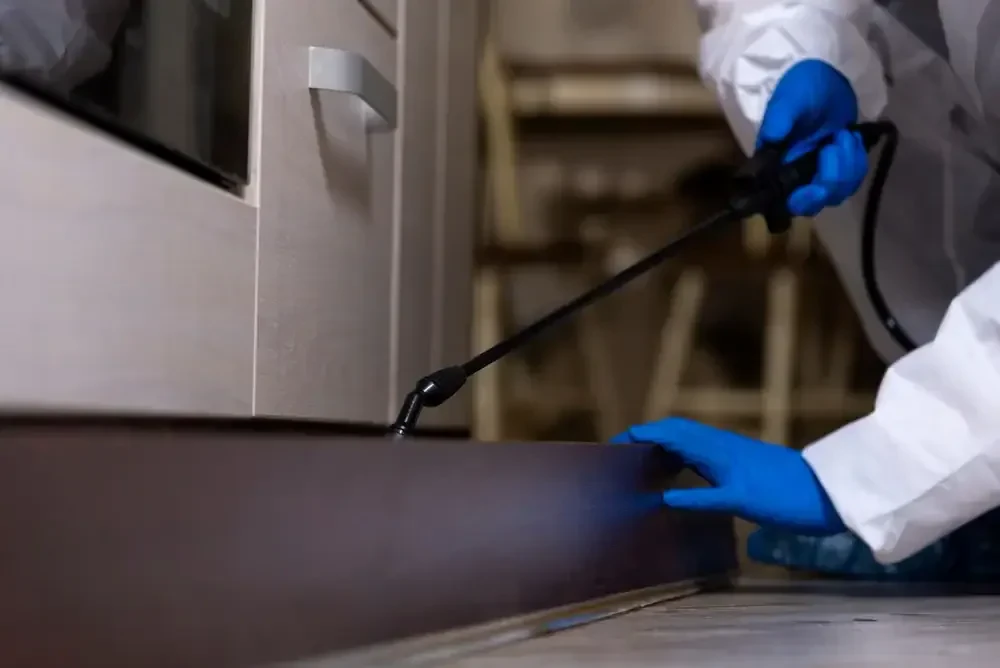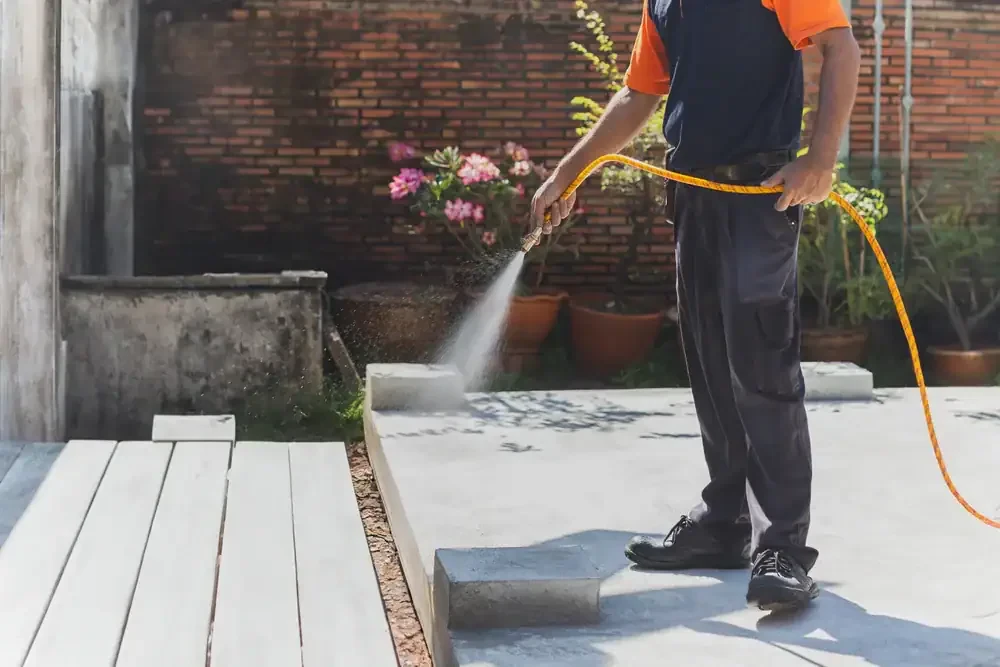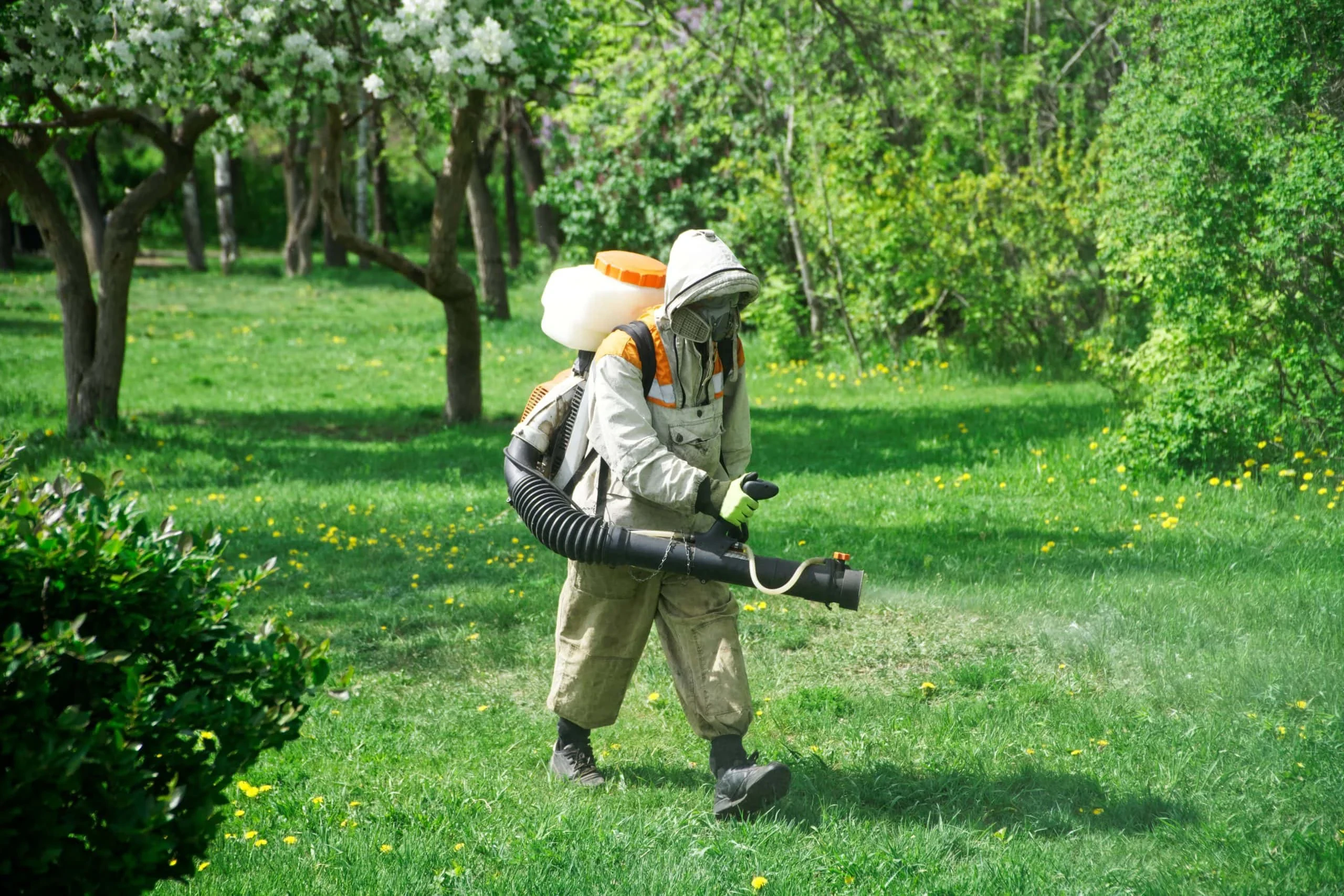Discover essential termite prevention methods that protect your Swartz Creek home from structural damage and costly repairs.
Share:

Summary:
Michigan homeowners face a specific enemy: the Eastern subterranean termite. These aren’t just any pests—they’re the most destructive wood-damaging insects in our state, and they’re surprisingly common throughout Swartz Creek and surrounding areas.
What makes them particularly dangerous is their secretive nature. Unlike other pests you can see and swat, termites work from the inside out, hollowing your wood structures while leaving the surface looking perfectly normal. A mature colony of 60,000 termites can consume the equivalent of a 2-foot section of 2×4 lumber in just one year.
The financial impact is staggering. These insects cause billions in property damage nationwide each year, and roughly one in four homes in our region will experience pest-related structural damage at some point.

Your home’s location in Swartz Creek creates specific termite risks you need to understand. Our climate provides the moisture termites need to thrive, while our soil composition gives them easy access to wooden structures.
Subterranean termites build their colonies in underground tunnels, then create pencil-sized mud tubes to reach your home’s wood. These tubes protect them from predators and maintain the humid environment they require for survival. You’ll typically find these tubes along exterior and interior walls, leading up from the ground into crawl spaces and basements.
The construction style of many local homes increases vulnerability. Slab-on-grade foundations are particularly susceptible because termites can enter through any crack wider than 1/32 of an inch. That’s smaller than the thickness of a credit card. Wood-to-ground contact around porches, decks, and landscaping features creates additional entry points.
Michigan’s seasonal moisture patterns compound the problem. Spring snowmelt, summer humidity, and fall rains create the wet conditions termites prefer. Poor drainage around foundations, leaky pipes, and inadequate ventilation in basements and crawl spaces make your home even more attractive to these destructive insects.
Understanding these local risk factors helps you focus your prevention efforts where they’ll be most effective. The goal isn’t to eliminate every possible risk—that’s impossible. Instead, you want to reduce your home’s attractiveness to termites while creating barriers that prevent them from reaching wooden structures.
Catching termite activity early can save you thousands in repair costs, but you need to know what to look for. The most obvious sign is also the most concerning: by the time you see it, termites have likely been active for months or even years.
Mud tubes are your first visual clue. These pencil-thin tunnels appear along foundation walls, in basements, and around crawl spaces. They look like dried mud streaks running from the soil up toward wooden structures. Don’t ignore them even if they appear empty—termites often abandon tubes temporarily but return later.
Wood damage presents differently than you might expect. Termite-damaged wood sounds hollow when tapped and may feel soft or crumble when probed with a screwdriver. The surface often appears normal while the interior has been hollowed out in a honeycomb pattern. Look carefully at areas where wood contacts soil or concrete.
Swarming termites indicate a mature, established colony. These winged insects emerge in spring, typically after rain, seeking to establish new colonies. You might find discarded wings near windows, doors, or light sources where swarmers gathered. Don’t confuse them with flying ants—termite swarmers have straight antennae and equal-length wings.
Structural changes can signal advanced infestations. Doors and windows that suddenly stick or won’t close properly, sagging floors, or visible cracks in walls might indicate termite damage to support structures. These signs require immediate professional assessment.
Water damage and termite damage often appear together. Termites prefer already-softened wood, so areas with past moisture problems are prime targets. Pay special attention to previously flooded basements, areas around old leaks, and anywhere wood has been water-damaged.
Want live answers?
Connect with a First Choice Pest Control expert for fast, friendly support.
Effective termite prevention focuses on three key areas: eliminating moisture, removing food sources, and creating physical barriers. These strategies work together to make your home less attractive to termites while blocking their access to wooden structures.
Moisture control forms the foundation of any prevention plan. Termites need water to survive, so reducing moisture around your home significantly decreases their interest in your property. This means more than just fixing obvious leaks—you need to think systematically about how water moves around and through your home.
Physical barriers prevent termites from reaching wood even if they’re attracted to your property. Some barriers are built into your home’s construction, while others can be added later. The key is creating continuous protection that doesn’t leave gaps for termites to exploit.

Start with your home’s foundation and work outward. Proper drainage keeps water away from foundation walls where termites typically begin their assault. Your gutters and downspouts should direct water at least six feet from the foundation. Clean gutters regularly—clogged gutters overflow onto foundation walls, creating the moist conditions termites love.
Grade your yard so water flows away from your home. The soil should slope down from your foundation at least six inches over the first ten feet. This prevents water from pooling against foundation walls during heavy rains. Add drainage systems in areas where natural grading isn’t sufficient.
Address moisture problems inside your home too. Basements and crawl spaces require particular attention since they’re often overlooked until problems develop. Ensure adequate ventilation in these areas—stagnant, humid air creates ideal termite habitat. Consider installing a dehumidifier if humidity levels consistently exceed 50%.
Fix plumbing leaks promptly, no matter how minor they seem. That slow drip under the kitchen sink or the toilet that rocks slightly can create enough moisture to attract termites. Pay special attention to pipes that run through or near wooden structures.
Air conditioning units and water heaters can create moisture problems if not properly maintained. Ensure condensation drains work correctly and don’t allow water to pool around these appliances. Insulate cold water pipes to prevent condensation in humid conditions.
Don’t overwater landscaping near your home. Sprinkler systems that spray against siding or foundation walls create unnecessary moisture. Adjust sprinkler patterns to water plants without soaking your home’s exterior. Consider drought-tolerant landscaping in areas immediately adjacent to your foundation.
Physical barriers work by denying termites access to wood or making that access detectable during regular inspections. The most effective barriers are incorporated during construction, but many can be added to existing homes.
Maintain a clear inspection zone around your home’s perimeter. Keep a 12-inch gap between soil and any wooden portions of your structure. This includes deck posts, porch supports, and siding. This gap makes it impossible for termites to move directly from soil to wood without creating visible mud tubes you can spot during inspections.
Remove wood-to-ground contact wherever possible. Wooden fence posts, landscape timbers, and deck supports that touch soil provide direct termite highways into your property. Replace direct wood contact with concrete footings, metal brackets, or pressure-treated lumber rated for ground contact.
Store firewood, lumber, and other cellulose materials away from your home. Keep these items at least 20 feet from your house and eight inches off the ground. Termites will infest these materials, but distance prevents them from easily moving to your home’s structure.
Seal cracks in foundation walls, especially around pipes and utility entrances. Use appropriate sealants for different materials—concrete cracks require different treatment than gaps around pipes. Even small openings can provide termite access, so thoroughness matters more than speed.
Consider professional termite barriers for new construction or major renovations. Chemical soil treatments create zones that kill or repel termites attempting to approach your home. Physical barriers like stainless steel mesh or sand barriers can also be effective when properly installed.
Install proper flashing around areas where different building materials meet. The junction between concrete foundations and wooden sills is particularly vulnerable. Proper flashing directs water away while creating a barrier termites must cross in the open where you can detect their mud tubes.
Prevention efforts significantly reduce your termite risk, but professional expertise ensures comprehensive protection. The equipment and materials needed for effective termite treatment are only available to licensed pest control services Swartz Creek MI companies, making professional partnerships essential for complete protection.
Regular professional inspections catch problems before they become expensive disasters. Trained technicians know where to look and what signs indicate early termite activity that homeowners typically miss. We can also identify conditions that make future infestations more likely, allowing you to address problems before termites arrive.
If you discover signs of termite activity, don’t delay professional treatment. The longer termites remain active, the more damage they cause and the more expensive treatment becomes. Professional treatment eliminates existing colonies and prevents new infestations from developing.
For comprehensive protection and peace of mind, contact us at First Choice Pest Control. Our experienced team understands Swartz Creek’s unique termite challenges and provides personalized solutions that keep your home safe from structural damage.
Article details:
Share: